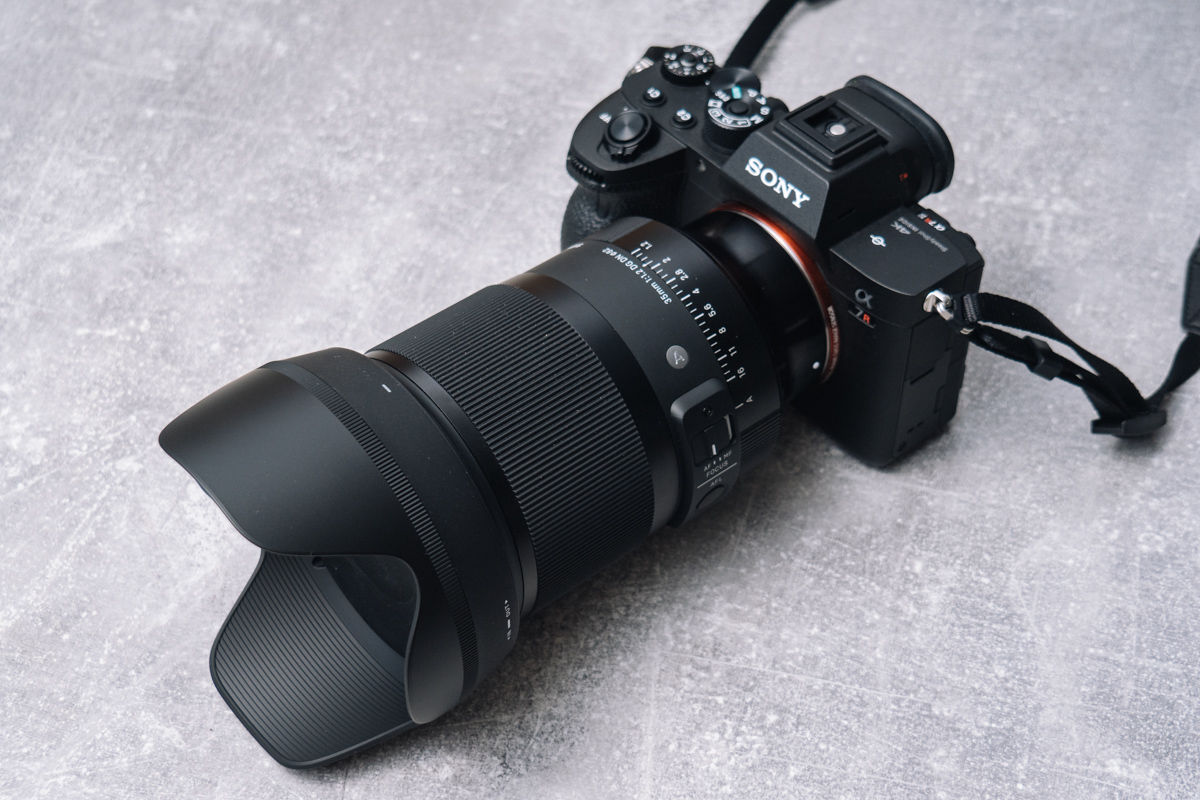

Still, this is the result of Sigma doing everything it could to make the best possible lens. It’s a label that makes you feel special. An f/1.2 aperture isn’t something anyone needs. It has all the performance you could want, but it’s really about bragging rights. I can’t fault a lens for being too good, but the Sigma 35mm F1.2 Art is the Tesla Cybertruck of lenses. That’s impressive.īut if using that much glass and starting at f/1.2 is what was required to get perfection at f/2 and beyond, then so be it. Peak sharpness arrives by f/2.8, but there’s little real-world difference between that and f/1.2. Wide open, real-world sharpness is excellent, although it still improves as you stop down. Yet I still want to see what this can do on an A7R IV with a sturdy tripod. I know, rationally, that I don’t need a 61MP camera. Three aspherical elements mean chromatic aberration just isn’t there, although higher pixel counts could potentially reveal some. Sigma says the 35mm F1.2 can resolve “over 50 million pixels,” which suggests it is targeting cameras like the 47-megapixel Panasonic Lumix S1R and 61MP Sony A7R IV, the two highest-resolution cameras in L mount and E mount, respectively. The maximum resolution of an imaging system is a factor of three things.

Not only is it physically impossible to make this lens work on a DSLR’s longer flange-back distance, but Sigma has shown no interest in making RF or Z-mount versions for Canon’s and Nikon’s mirrorless systems, respectively. Canon and Nikon shooters have long been Sigma’s bread and butter, but they appear to be left in the cold here. This is a mirrorless-only lens, available in either L mount or Sony E mount. Those extra blades mean the aperture stays nearly perfectly circular when stopped down, leading to rounder, more natural blur. Given how many people shoot both stills and video these days, it’s a feature I wish every new lens had.įurther evidence of the lens’s hybrid nature are the 11 iris blades, a higher count than most still photo lenses, but par for the course for cinema. The latter is mostly aimed at videographers who need to be able to smoothly ramp exposure up or down without noticeable steps. In addition to the usual auto/manual focus switch, the lens barrel has a focus lock button and aperture de-click switch. Like all Art lenses, that glass is housed in a sturdy, dust- and splash-proof exterior.

It’s a lot of glass, an additional four elements over the 35mm F1.4 Art. There are 17 elements in 12 groups, including three aspherical elements. But, it also isn’t that different from the readily available f/1.4 lenses out there.Īlso contributing to that weight is the elaborate optical formula. Full-frame f/1.2s are relatively rare, and this combination of bright aperture and large sensor can give you a shallow depth of field that simply isn’t possible on smaller formats. There are, of course, good reasons for that size, starting with the f/1.2 aperture. If you plan on replacing an existing 35mm with it, you might need a bigger camera bag. This is the only 35mm I’ve shot that I felt should have its own tripod collar. Mounted to the diminutive Sigma Fp I had, it’s laughable. Get ready for a bag upgradeĪt 5.5 inches long and a diameter of 3.5 inches, the 35mm F1.2 would be huge on any camera. It doesn’t matter that it’s heavy enough to anchor a small ship. It knows it has the best lens, and at $1,500, it undercuts the older and slower 35mm f/1.4 lenses from other major manufacturers. But where other Art lenses were built for DSLRs, this one is part of Sigma’s new DN lineup, made for (usually) smaller mirrorless cameras. I’ve groaned about the size and weight of almost every Art lens I’ve reviewed, and they’ve all been optically excellent. Sigma is no stranger to delivering the best quality at any cost. However, thanks to its bulk, it is also the most inconvenient 35mm I have used. The lens is a technical marvel and one of the sharpest I’ve seen, with beautiful bokeh and effectively no distortion.


 0 kommentar(er)
0 kommentar(er)
